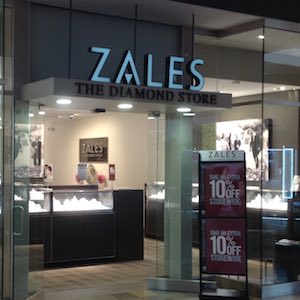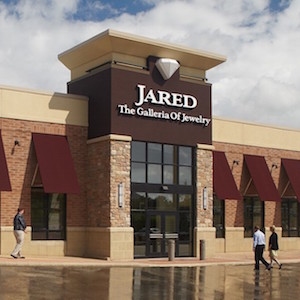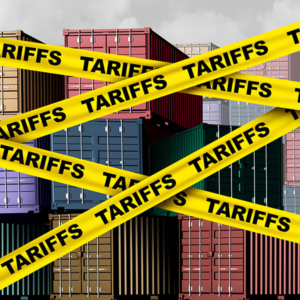
In my years covering this industry, I’ve seen many different executive styles. I’ve watched passionate execs like Ron Johnson who aim to overthrow the retail paradigm, almost overnight. They mostly crash and burn. I’ve also seen methodical bean counters, like those who formerly ran Pandora, who often drain the company of life.
Perhaps Signet Jewelers CEO Virginia “Gina” Drosos (pictured) mixes the better parts of both. She has big plans and is not dispassionate about them. But she’s making her changes in a methodical, bean-counter-y way. Which is probably the best way to go about it.
On April 12, Signet held a virtual investor presentation—the first investor presentation of any kind it’s held since 2017. Now that it’s reached the end of its three-year “Path to Brilliance,” it’s conjured a new strategy, “Inspiring Brilliance,” which aims to dramatically grow its market share.
Signet estimates its current share at 6%—nearly 10 times that of its nearest specialty-jewelry competitor. It’s aiming to increase that share to 10%. (Independent jewelers still control 65% of the market, according to Signet.) That would turn the company from a $6 billion business to a $9 billion one.
Drosos didn’t lay out a time frame for this growth, only saying that it will occur “over time.” But she did sketch out how the company plans to do it—what we’ll call its “map to billions.”
Signet will generate its first additional billion dollars by further differentiating and expanding its two core U.S. banners (Kay and Zales); it will get another billon from “leading in digital commerce”; and it will accrue the final billion dollars by expanding its midmarket positioning, in particular its service offerings.
Let’s take these one by one:
• Banner differentiation.
When Signet took over Zale Corp. in 2014, the newly merged company seemed a bit of a mess. Signet picked up Zales, which traditionally competed against Kay in the malls (where business was off generally), as well as 95 Gordon’s stores. There was considerable overlap between the two companies; a CNBC anchor even asked Drosos why Signet didn’t just merge Kay and Zales, which was both a smart and crazy suggestion.
The new crew has done a good—and perhaps underappreciated—job sorting all this out. Gordon’s is mostly gone, and Signet is trying to better differentiate Kay and Zales.
“The company used to see Zales pretty much as a smaller version of Kay,” said Jamie Singleton, president of Zales, Kay, and Peoples, during the investor presentation. “Which meant that it continued to be one of Kay’s direct competitors. That lack of differentiation wasn’t good for either banner.”
Research showed that the “two banners are attitudinally very different,” Singleton continued. “Each banner could appeal to an entirely different customer, creating space for both of them to grow together, rather than compete for the same customers and market share.”
Kay, she said, targets the “generous sentimentalist,” while Zales focuses on the “bold statement maker who tends to be the heart of the millennial generation.”
“We have define[d] each brand’s voice,” she said. “We sharpened our product assortments with a particular focus on what mattered most to the individual banner.… We have hired talent who looked, talked, and expressed themselves like the people we were serving.”

Piercing Pagoda—which was also part of the Zale acquisition—has been a surprise corporate star recently, posting six years of positive comps, following a long period of decline.
Singleton attributes this turnaround to better defining “what the brand stood for and did not stand for—style, not fashion.”
That leaves one U.S. banner, which Signet seems unsure what to do with: Jared.
Drosos said the company is “tearing up” Jared’s current offerings and will offer more features like Jared Foundry, the brand’s custom-design studio, which it plans to soon have in 50 doors. There were hints that Signet will move the chain upscale, to target the “extravagant indulger.” But it’s clearly a work in progress.
“Jared’s journey is just getting started in many ways,” said Drosos.

• Expanding digital offerings.
In the wake of the COVID-19 pandemic, every retailer is beefing up its digital offerings (except for e-tailers, who still want to open brick-and-mortar stores). But Signet is different, said chief digital officer Rebecca Wooters.
“We aren’t a company that just added a digital department,” she said. “We are now a digitally focused company.… We believe there is tremendous upside in the digital jewelry market.”
In addition to buying two digital-native brands—James Allen and Rocksbox—Wooters said that the company plans to offer “100 new features and enhancements” to its online offerings, with more on the way.
• Services.
This is Signet’s most intriguing, and riskiest, bet. It wants to expand its service offerings, including jewelry repair, piercings, cleaning, custom design, and rental (with Rocksbox).
“Repair and care alone is a $3 billion business in the U.S.,” said Bill Brace, president of Jared and jewelry services and Signet’s chief marketing officer. “Our goal is to create an ecosystem of offerings to be the one-stop shop for any service related to jewelry.”

And while Signet is already the largest provider of jewelry repair services in America, “we see a significant upside and market share potential,” Brace said. “Jewelry customers are underserved today. The same way customers service their cars, they also have the need to service their jewelry.”
Services also “carry a higher margin and require a relatively low level of investment,” he noted.
Signet is also marrying its service with its tech capabilities—so customers will now be able to track their ring repair digitally through online updates and texts. Botched repairs, you may remember, got the old Signet into trouble.
Whether or not they reach that $9 billion, Signet’s leadership deserves credit for mostly righting the ship, at least for now. COVID-19 probably helped the company, as Signet quickly pivoted, and ended up doing well, in the new online-heavy environment. It still faces challenges—it expects comps to fall in the second half of the year—but following a few years of turmoil, Signet seems to be in a better place.
The vibe of the new team is very different from the old one, which a former exec likened to a big family. The old crew was mostly lifers—guys who’d spent decades in the trenches, building the company into America’s largest jeweler. (And yes, they were mostly guys.)
That old Signet scored its biggest victory when it gobbled up Zale Corp., its longtime nemesis. That also marked the beginning of the end. The purchase doubled the company’s size, and made it part of the S&P 500. It also brought some ugly events into view. The combined company’s new prominence probably made it inevitable that new, more corporate, leadership would be brought in.
The seven execs who spoke at the investor presentation were all relative newbies to the industry, having been in it for less than a decade. Drosos pointed out that 40% of Signet’s leadership team are “jewelry industry professionals, bringing 80 years of combined experience.” That sounds impressive, although you could probably get 80 years’ experience with just three members of the old guard. The other 60% came to Signet in the last few years with a long list of companies under their belt—and I wouldn’t be surprised if they eventually leave to notch a few more.
The presentation featured generous helpings of tech talk—the company is switching to cloud storage, which is apparently great for reasons I didn’t quite catch—as well as corporate buzzwords—Signet now boasts a “say do” culture, which I also didn’t get. (Inspired by Yoda?) At times, the event seemed a little soulless, like the artificial Zoom backgrounds the executives stood in front of.
In probably the biggest nod to the Signet of old, Drosos closed with a syrupy—and expressly multicultural—two-minute video on “inspiring love.” Mostly, though, execs seemed like they could be discussing any product; they didn’t talk much about jewelry, only services and balance sheets. (They also all but ignored their Canadian and U.K. divisions.) To be sure, that wasn’t out of place at an investor conference, and everyone seemed perfectly competent and capable. They just didn’t offer much to get excited about, unless your eyes light up when hearing about cloud storage.
The old crew, who had spent most of their careers at Signet, were known for their hard-won understanding of the mall jewelry business and their target customer. The new crew said they, too, understand their audience, because of all the data and analytics at their disposal.
That’s the change, and the challenge. You learn different things working in the field than you do scanning spreadsheets. Data is a powerful thing. It’s not clear it can inspire love.
(Photos courtesy of Signet Jewelers)
- Subscribe to the JCK News Daily
- Subscribe to the JCK Special Report
- Follow JCK on Instagram: @jckmagazine
- Follow JCK on X: @jckmagazine
- Follow JCK on Facebook: @jckmagazine





